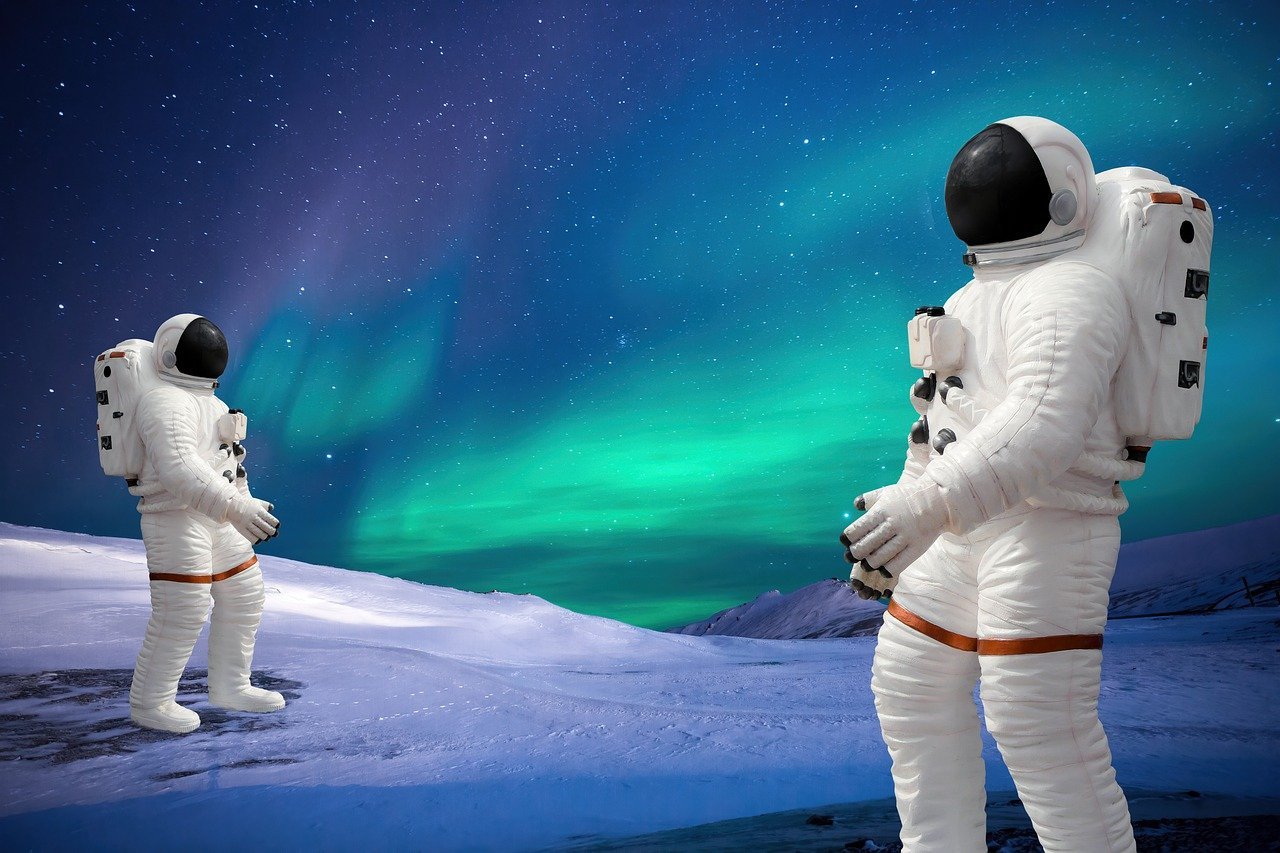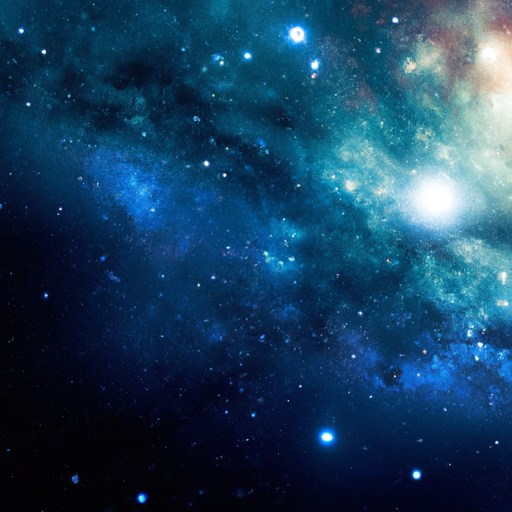Imagine a world where everything we know about the universe is flipped on its head. In this exciting article, we will be taking you on a journey through time and space to unveil the incredible phenomenon that is the Big Bang Theory. Get ready to explore the fundamentals of cosmic evolution, as we uncover the origins of the universe and the mind-boggling processes that have shaped it into what we see today. So sit back, relax, and prepare to have your mind blown by the wonders of the cosmos.

What is the Big Bang Theory?
Definition
The Big Bang Theory is a scientific explanation for the origin and evolution of the universe. According to this theory, the universe originated from a highly dense and hot state about 13.8 billion years ago, and has been expanding and evolving ever since. This scientific framework provides a comprehensive understanding of how the universe began, the formation of matter and galaxies, and the ongoing expansion of the cosmos.
Historical Context
The Big Bang Theory has its roots in the early 20th century. The concept of an expanding universe was first proposed by the Belgian priest and physicist Georges Lemaître in 1927. Edwin Hubble’s observations of redshift in distant galaxies in the late 1920s and early 1930s further supported the notion of an expanding universe. These early discoveries paved the way for the development of the Big Bang Theory as the prevailing explanation for the origins of the cosmos.
Evidence for the Big Bang Theory
Cosmic Microwave Background Radiation
One of the most compelling pieces of evidence for the Big Bang Theory is the discovery of cosmic microwave background radiation (CMB). In 1965, Arno Penzias and Robert Wilson detected a faint microwave signal that permeates the entire universe. This radiation is remnants of the intense heat from the early universe, when it was still in a hot, dense state. The CMB provides strong support for the Big Bang Theory as it is consistent with the predicted afterglow of an explosive, high-energy event.
Redshift of Galaxies
Observations of distant galaxies show that they are moving away from us, and the farther they are, the faster they appear to be receding. This phenomenon, known as redshift, is a direct consequence of the expansion of the universe. The redshift of galaxies provides strong evidence for the Big Bang Theory since it implies that the universe is continuously expanding.
Abundance of Light Elements
The abundance of light elements, such as hydrogen and helium, in the universe is another piece of evidence supporting the Big Bang Theory. The high-energy conditions during the early universe allowed for the fusion of protons and neutrons, leading to the formation of these light elements. The predicted abundance of light elements from the Big Bang matches closely with observations, further confirming the validity of the theory.
Formation of Large-Scale Structures
The formation of large-scale structures, such as galaxies and galaxy clusters, is a natural consequence of the expansion of the universe. Over time, gravity acts on the initial fluctuations in matter density caused by quantum fluctuations during the early universe, leading to the formation of these structures. The observation and theoretical understanding of these large-scale structures align with the predictions of the Big Bang Theory.
The Expansion of the Universe
Hubble’s Law
Hubble’s Law, discovered by Edwin Hubble in the 1920s, states that the velocity at which a galaxy is receding from us is directly proportional to its distance. This relationship, known as the Hubble constant, quantifies the expansion rate of the universe. The understanding of Hubble’s Law supports the concept of an expanding universe, a critical aspect of the Big Bang Theory.
The Fate of the Universe
Based on the observed rate of expansion and the understanding of the universe’s composition, scientists have proposed different scenarios for the fate of the universe. If the expansion continues to accelerate under the influence of dark energy, the universe may ultimately experience a “big freeze” where galaxies drift apart and everything becomes dilute. Another possibility is a “big crunch” where the expansion slows down and reverses, leading to the collapse and eventual destruction of the universe. The fate of the universe remains an intriguing topic of study within the context of the Big Bang Theory.
The Early Universe
Planck Epoch
The Planck Epoch refers to the earliest phase of the universe, occurring within a fraction of a second after the Big Bang. During this epoch, the universe was extremely hot and dense, and the fundamental forces of nature were unified. Our current understanding of the Planck Epoch is limited, as it requires a theory of quantum gravity to fully comprehend the physical processes at play.
Grand Unification Epoch
The Grand Unification Epoch follows the Planck Epoch and lasts for a tiny fraction of a second. It is during this epoch that scientists believe the strong force, electromagnetic force, and weak force were unified into a single force. As the universe expanded and cooled, these forces became distinct.
Inflationary Epoch
The Inflationary Epoch occurred very early in the universe’s history. It describes a period of rapid and exponential expansion, driven by a hypothetical field known as the inflaton field. This epoch explains why the universe appears so homogeneous on large scales and provides an explanation for the origin of the cosmic microwave background radiation.
Electroweak Epoch
The Electroweak Epoch begins when the electromagnetic and weak forces become distinct from each other. The temperature of the universe during this epoch is extremely high, causing particles to acquire mass through interactions with the Higgs field.
Quark Epoch
During the Quark Epoch, the universe is still incredibly hot, and the strong force becomes distinct from the electroweak force. At this stage, quarks, which are the building blocks of protons and neutrons, are free and roam freely throughout the universe.
Hadron Epoch
In the Hadron Epoch, the temperature of the universe decreases to a point where quarks combine to form hadrons, which include protons and neutrons. This epoch serves as the transition into a state where the universe consists mainly of these particles.

Formation of Matter and Atoms
Lepton Epoch
The Lepton Epoch follows the Hadron Epoch and is characterized by the dominance of leptons, which include electrons and neutrinos. As the universe continues to expand and cool, the density of leptons decreases.
Nucleosynthesis
Nucleosynthesis refers to the process of forming atomic nuclei. During the early stages of the universe, light elements like hydrogen and helium are synthesized through the fusion of protons and neutrons. The abundance of these elements is a key piece of evidence for the Big Bang Theory.
Recombination
Recombination occurs when the temperature of the universe drops to a point where electrons can combine with protons and form atoms. The release of photons during recombination gives rise to the cosmic microwave background radiation, which plays a crucial role in supporting the Big Bang Theory.
Formation and Evolution of Stars
Protostars
Protostars are the earliest stage in the formation of stars. They are formed from the collapse of dense molecular clouds under the influence of gravity. During this phase, the protostar accumulates mass and undergoes various physical changes as it moves towards becoming a fully-fledged star.
Main Sequence
The main sequence is the longest and most stable phase in a star’s life cycle. Stars in this stage, like our Sun, undergo nuclear fusion in their cores, converting hydrogen into helium. The energy produced from this fusion process allows stars to maintain their equilibrium and shine brightly.
Red Giants and Supernovae
As stars exhaust their hydrogen fuel, they undergo changes in their structure and size. Stars with mass comparable to our Sun eventually become red giants, expanding in size and evolving into a different phase of stellar evolution. Massive stars, on the other hand, undergo a violent explosion called a supernova, releasing huge amounts of energy and scattering heavy elements into space.
Black Holes and Neutron Stars
In some cases, the remnants of massive stars after a supernova explosion collapse under their own gravity, leading to the formation of black holes or neutron stars. Black holes possess such strong gravitational forces that anything crossing their event horizon cannot escape. Neutron stars are incredibly dense and composed of neutrons. Both black holes and neutron stars have profound effects on their surroundings and are key components in the study of the universe’s evolution.

Galaxy Formation
Protogalactic Clouds
Protogalactic clouds are vast clouds of gas and dust that clump together under the influence of gravity. As these clouds collapse, they give rise to the formation of galaxies. The dynamics of protogalactic clouds play a central role in understanding how galaxies form and evolve.
Hierarchical Clustering
Hierarchical clustering refers to the process by which small structures merge to form larger structures. In the context of galaxy formation, this process involves the merging of smaller protogalactic clouds to create more massive galaxies over time. Hierarchical clustering is a fundamental concept in our understanding of the large-scale structure of the universe.
Galaxy Morphology
Galaxy morphology refers to the classification and study of the shapes and structures of galaxies. Galaxies can be categorized into different types, including spiral galaxies with their distinctive arms, elliptical galaxies with a rounded shape, and irregular galaxies. By studying galaxy morphology, astronomers gain insights into the formation and evolution of these cosmic structures.
The Cosmic Web
Large-Scale Structure of the Universe
The large-scale structure of the universe refers to the vast arrangement of galaxies, galaxy clusters, and cosmic filaments. These structures form a web-like pattern known as the cosmic web. The understanding of the cosmic web provides insights into the distribution of matter in the universe and the processes that govern its evolution.
Dark Matter
Dark matter is an elusive form of matter that does not interact with light or other electromagnetic radiation. It accounts for a significant portion of the total matter in the universe and plays a crucial role in the formation and evolution of large-scale structures. Its gravitational effects on visible matter help shape the cosmic web.
Dark Energy
Dark energy is a hypothetical form of energy that is thought to be responsible for the observed acceleration of the universe’s expansion. Its existence is necessary to explain the discrepancy between the predicted and observed expansion rates. Dark energy remains one of the biggest mysteries in modern cosmology and is an active area of research.

Cosmic Microwave Background Radiation
Discovery
The discovery of the cosmic microwave background radiation (CMB) in 1965 by Arno Penzias and Robert Wilson was a landmark moment in cosmology. They detected a faint, uniform microwave radiation permeating the entire universe. This discovery was a serendipitous finding and provided compelling evidence for the Big Bang Theory.
Properties and Significance
The properties of the cosmic microwave background radiation, such as its uniform distribution and its blackbody spectrum, align closely with the predictions of the Big Bang Theory. The CMB serves as a snapshot of the early universe, allowing scientists to study the conditions of the universe only 380,000 years after the Big Bang. Its study provides crucial insights into the origin and evolution of the cosmos.
Alternatives and Criticisms of the Big Bang Theory
Steady State Theory
The Steady State Theory, proposed by Hermann Bondi, Thomas Gold, and Fred Hoyle in the 1940s, posits that the universe remains unchanged on average over time. Unlike the Big Bang Theory, the Steady State Theory does not require a singular origin of the universe and allows for the continuous creation of matter to maintain a consistent density. While the Steady State Theory was an alternative explanation initially, the discovery of the cosmic microwave background radiation posed significant challenges to its validity.
Inflationary Cosmology
Inflationary cosmology is an extension of the Big Bang Theory that proposes a rapid expansion of the universe in its early stages. This theory aims to address some of the issues and discrepancies within the original Big Bang model, such as the observed uniformity of the CMB and the lack of certain predicted structures. Inflationary cosmology provides potential explanations for these phenomena, but it remains an area of ongoing research and scrutiny.
Religious and Philosophical Objections
As with any scientific theory that explores the origins and evolution of the universe, the Big Bang Theory has faced objections from religious and philosophical perspectives. Some religious traditions posit alternative cosmologies based on religious texts or beliefs, which may differ from the scientific understanding of the Big Bang Theory. It is important to recognize that scientific explanations, such as the Big Bang Theory, provide a framework for understanding the natural world, while religious and philosophical perspectives offer different insights into the human experience.
In conclusion, the Big Bang Theory stands as the prevailing scientific explanation for the origin, evolution, and ongoing expansion of the universe. With its foundation in empirical evidence and consistent with numerous astronomical observations, this framework provides a comprehensive understanding of cosmic evolution. From the early moments of the Planck Epoch to the formation of matter, galaxies, and large-scale structures, the Big Bang Theory unveils the fascinating story of our cosmic origins. While alternative theories and objections exist, the scientific community continues to refine and deepen our understanding of the universe through ongoing research and observation.